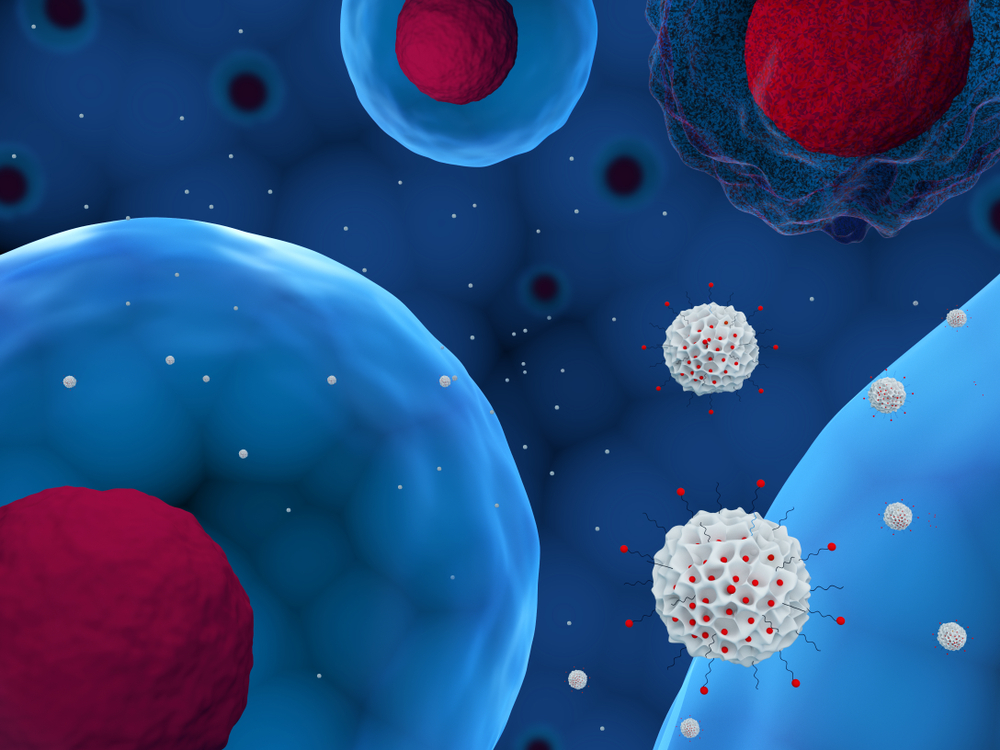#MDA2021 – Plasma Exchange Enables Effective Gene Therapy Redosing

Editor’s note: The Muscular Dystrophy News Today team is providing in-depth coverage of the 2021 MDA Virtual Clinical and Scientific Conference, March 15–18. Go here to read the latest stories from the conference.
Gene therapy redosing after therapeutic plasma exchange (TPE) — done to lower antibodies against viral delivery vectors — led to increased levels of a shorter but functional form of dystrophyn, the protein missing in people with Duchenne muscular dystrophy (DMD), a study in non-human primates found.
The findings support TPE as a pre-treatment to gene therapy redosing.
The study also revealed that different immunosuppressive regimens did not impact the safety and efficacy of DMD-related gene therapy.
The results were presented at the 2021 MDA Virtual Clinical & Scientific Conference, in an oral presentation titled “Micro-dystrophin gene therapy delivery and therapeutic plasma exchange in non-human primates.”
A modified adeno-associated virus (AAV) is commonly used in gene therapy strategies to deliver healthy copies of the mutated gene in people with certain genetic diseases.
Because they are a virus, AAVs can elicit an immune response and generate antibodies against the vector, reducing treatment effectiveness. Additionally, some patients may have pre-existing immunity against AAVs, further limiting the therapy’s efficacy.
Now, researchers from Sarepta Therapeutics used a non-human primate (NHP) model to investigate the influence of various immunosuppression strategies on gene therapy’s efficacy and safety. The study was funded by Sarepta.
The goal was to assess the impact of TPE, also called plasmapheresis — which consists of removing and replacing blood plasma to reduce antibody levels — as a potential pre-treatment for individuals with pre-existing immunity.
A total of 15 NHPs were dosed with SRP-9001 at a dose of 2e14 vector genomes (vg)/kg given intravenously, or into the vein. SRP-9001 is an investigational gene therapy by Sarepta that uses AAVs to deliver a gene coding for micro-dystrophin, a smaller but working form of dystrophin.
The NHPs were divided into five groups, with three animals in each. The control group, identified as group 1, received no immunosuppression treatment or TPE, while two groups — 2 and 3 — were treated with the immunosuppressive therapy prednisone one day before SRP-9001 and up to 60 days after.
Group 4 was given prednisone starting 14 days before, and up to 60 days after SRP-9001 dosing. Finally, group 5 was treated with a triple immunosuppressive regimen. This included the biological rituximab, dosed 14 days and one day prior to gene therapy infusion, as well as sirolimus, given three days before and up to 60 days after SRP-9001, and prednisone, which was administered one day before and up to 60 days after.
Muscle biopsies were performed before SRP-9001 infusion and 12 weeks after the treatment. Blood samples were collected to evaluate safety and immune responses.
The analysis found the antibody response targeting the AAV was similar across all groups, regardless of immunosuppressive regimen, with no signs of abnormal events. The researchers noted that no anti-AAV antibodies were seen in one animal from group 2.
Elevated liver enzymes were reported adverse events, or side effects observed in groups 1 through 4, which resolved with continued treatment.
In all groups, the 12-week muscle biopsy showed no significant difference in the number of vector genome copies, which indicated that different immune suppression regimens did not impact the AAV delivery system’s efficiency.
Next, seven of the animals already dosed from groups 2 to 4 who were positive for anti-AAV antibodies were treated with two to three rounds of TPE — which reduced antibody levels — before a second SRP-9001 dose. All animals received prednisone up to 30 days after redosing. Group 5 animals that did not undergo TPE also were given a second SRP-9001 dose.
TPE was well-tolerated with no abnormal immunological response. Elevated liver enzymes were seen after the second SRP-9001 dose and resolved with continued prednisone, the researchers said.
Before re-dosing among group 5 animals, anti-AAV antibody levels were very high. After the second dose, adverse events included increased heart and breathing rates, vomiting, rash at the injection site, pale skin color, and shallow breathing. All were resolved with further treatment.
Notably, after the second dose, micro-dystrophin expression in muscles increased in all redosed NHPs that underwent TPE, compared with before this procedure. Higher micro-dystrophin was found in heart muscle, diaphragm, and skeletal muscles, which are those attached to bones.
“These findings establish TPE as a safe and efficacious strategy for [AAV] vector delivery in NHPs and may inform human studies in individuals with pre-existing immunity, or redosing,” the team wrote.
“Further studies are needed to evaluate the safety and efficacy of gene therapy dosing with pre-existing immunity to [AAV],” the researchers said.






